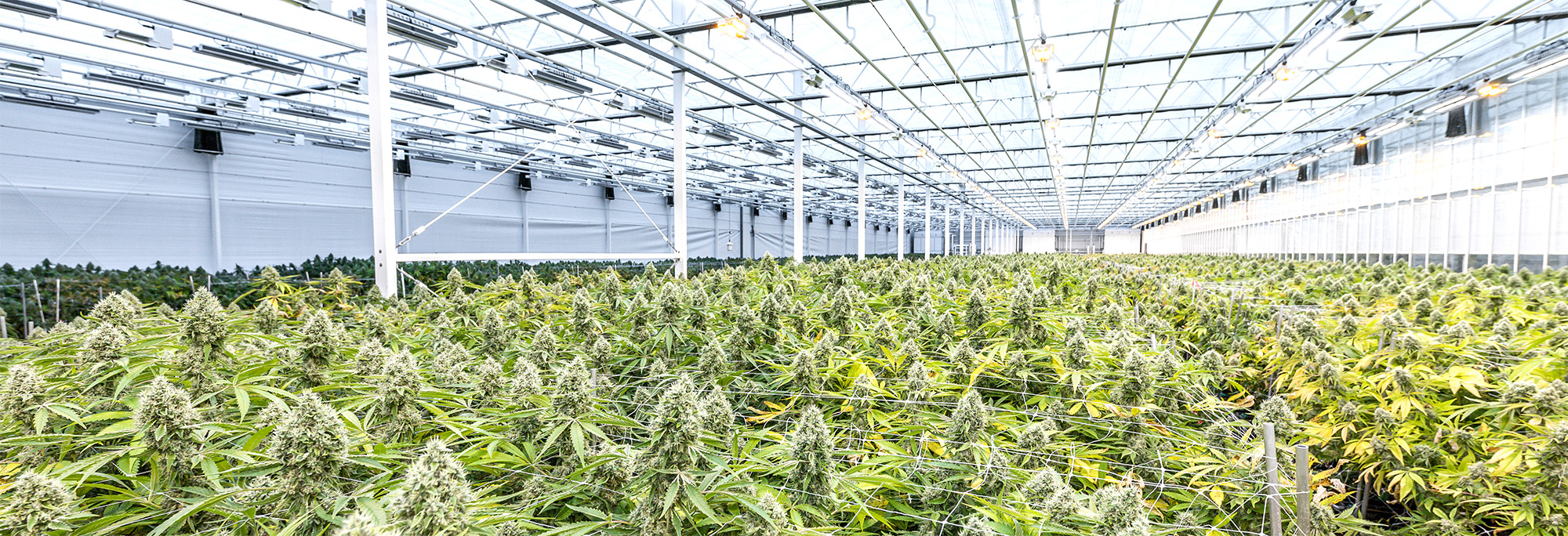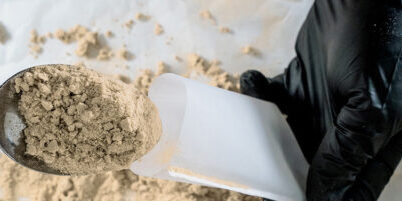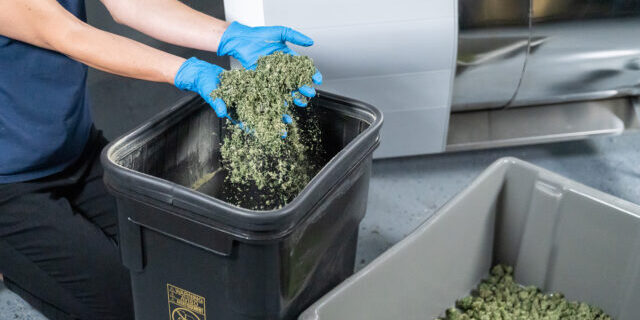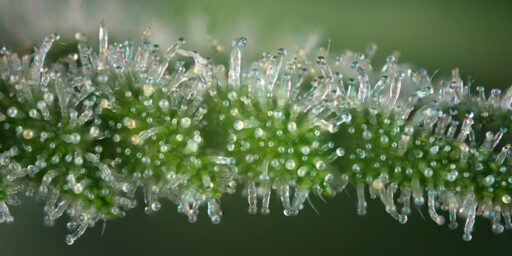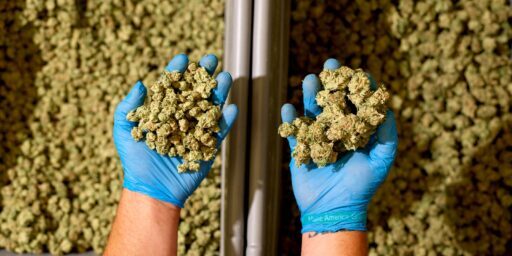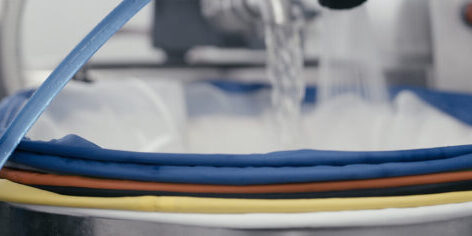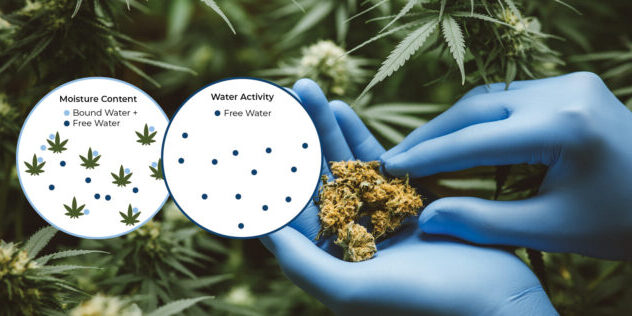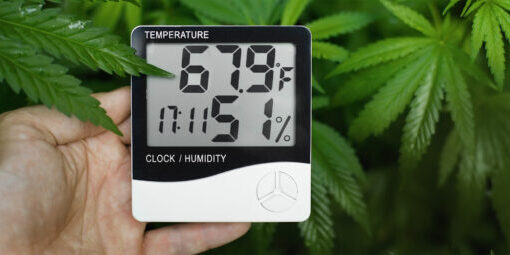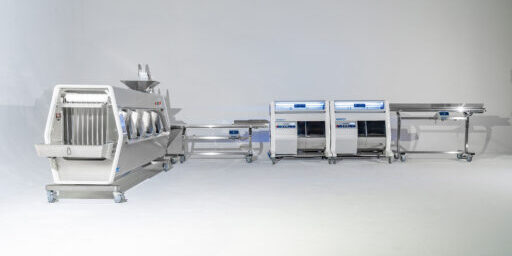Water Activity vs. Moisture Content: Essential Insights for Optimal Cannabis Trimming
In the cannabis industry, various factors influence the potency and overall quality of your products. These factors can also affect their longevity, shelf-life, and profit potential. Water activity and moisture content are two crucial factors that can be easily fumbled, degrading overall product quality.
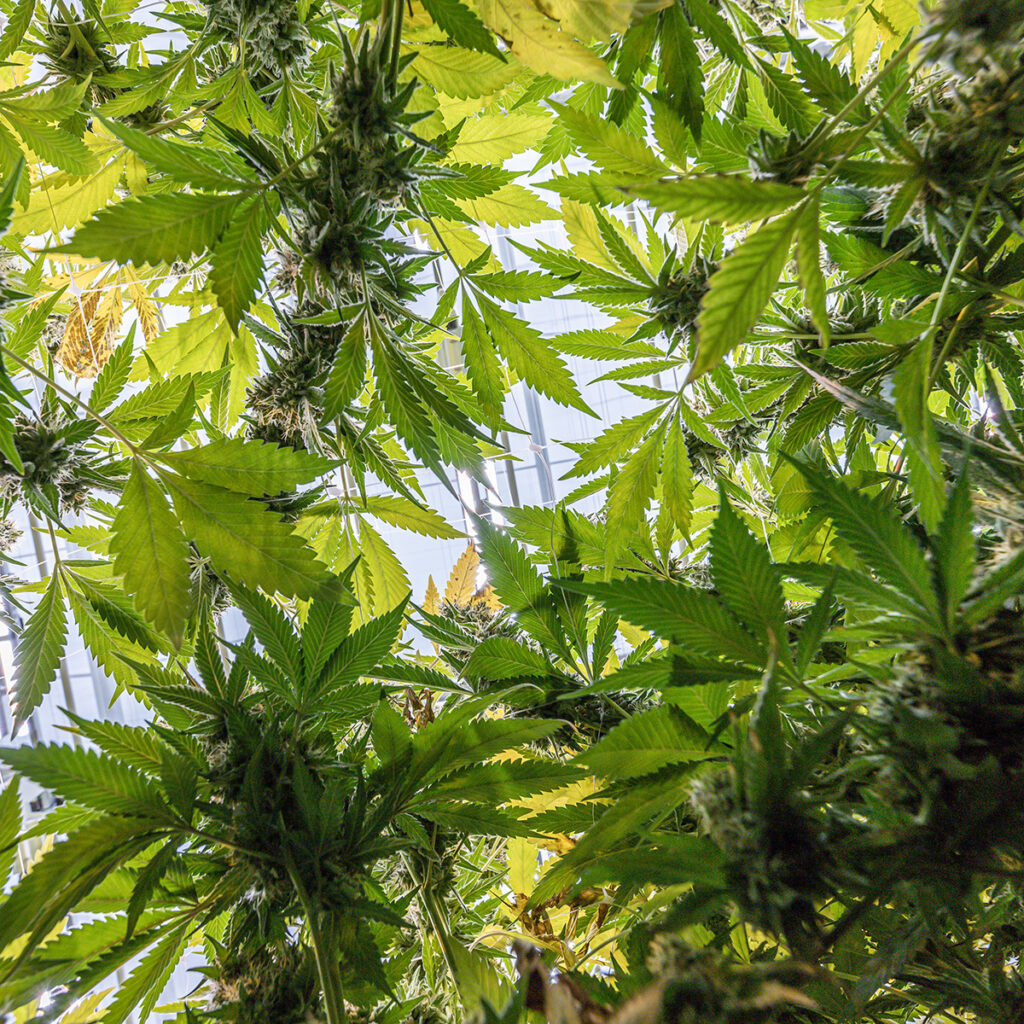
Although the terms “moisture content” and “water activity” might seem similar when you’re assessing your cannabis plants, they are actually quite different. Water activity and moisture content are related via the moisture sorption isotherm, but there are differences between them.
Moisture content refers to the total amount of water present in a plant. Water activity measures the level of free water that might feed the growth of mildew, mold, or other contaminants.
Understanding both of these metrics is crucial to success, as they influence the quality, safety, and profitability of your cannabis flower. Here, we’ll provide insights to help cultivators optimize processes like drying, curing, and trimming, as it relates to water activity and moisture content, to ultimately produce better cannabis products.
What is Water Activity?
Water activity (aw), quantifies the free water in cannabis — the water available for microbial growth. Measured on a scale from 0 to 1, it’s a critical factor for determining product stability. Unlike total water content, water activity specifically indicates the level of water available for microbial growth.
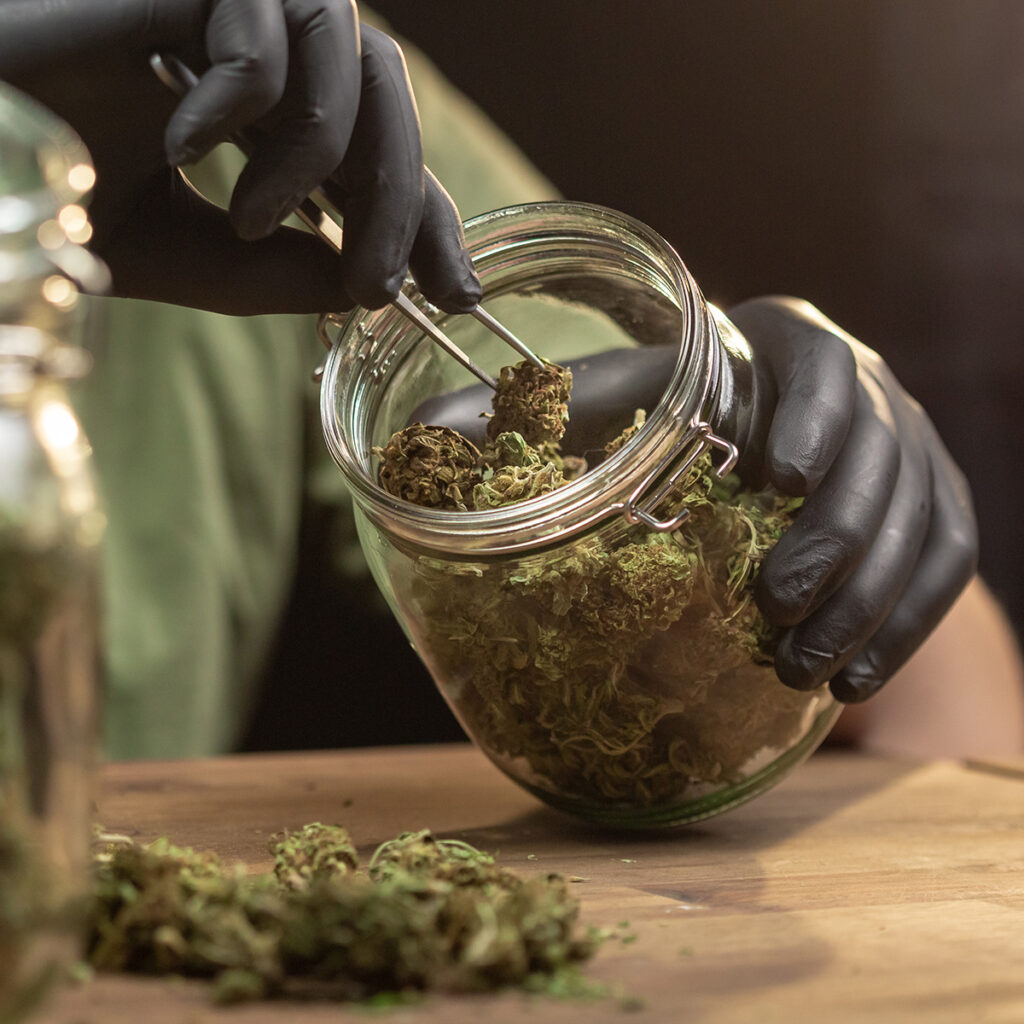
Each microorganism has an ideal internal water activity, and its ability to grow and reproduce depends on maintaining that level. While cannabis products need a certain level of water activity, particularly high levels lead to an increased chance of bacteria, mold, and mildew growth. This can lead to a higher risk of unsafe products and quicker product deterioration.
For cannabis flower, the ideal range is 0.55 to 0.65 aw, which is dry enough to prevent mold yet moist enough to preserve terpenes and cannabinoids. Straying from this range can result in either microbial contamination or terpene loss, making it crucial for cultivators to monitor water activity levels carefully throughout the various stages of processing. Maintaining the optimal water activity range ensures cultivators can maximize potency and stay compliant with evolving state and industry regulations.
Government groups now require cultivators to test water activity on cannabis products alongside moisture content before selling products to the public. This applies throughout numerous states including Nevada, California, Oregon, and Washington.
Pros and Cons of Measuring Water Activity
Measuring water activity is crucial to ensuring the microbial safety and longevity of cannabis products, as well as adhering to evolving regulatory standards. Throughout cannabis trimming, processing, and storage, cultivators should have a clear view of the water activity level in their products, and how it can affect their plants.
The Benefits of Measuring Water Activity
The benefits of measuring water activity include:
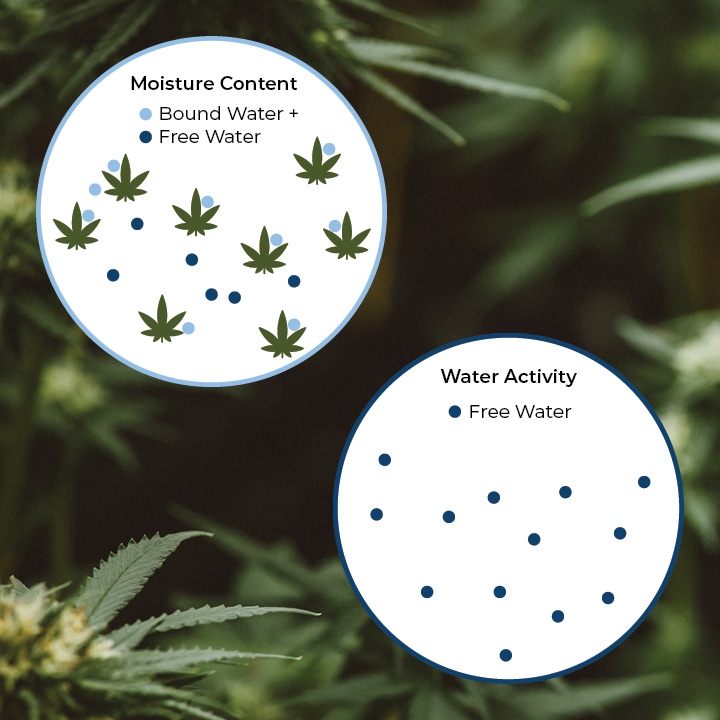
Enhanced Microbial Safety: Water activity (aw) is directly tied to the risk of microbial contamination. A level below 0.65 aw significantly reduces the growth potential of mold, mildew, and bacteria, which is essential for meeting regulatory compliance and ensuring consumer safety.
Improved potency and flavor: Maintaining water activity within the optimal range protects volatile terpenes and cannabinoids, safeguarding the aroma, flavor, and potency of the cannabis. Preserving the correct water activity levels improves the potential profitability and appeal of cannabis products.
Better shelf stability and longevity: Proper water activity extends the shelf life of cannabis products by preventing both microbial spoilage and chemical degradation. For example, low aw levels minimize the decarboxylation of cannabinoids, helping maintain potency.
Preserved consistency: Maintaining specific water activity levels leads to more consistency in products. By achieving a standardized acceptable aw level across every batch and harvest, processors can avoid the risk of brittle buds from low water activity while simultaneously avoiding risks of mold and mildew growth from high levels of water activity.
Continued compliance: To comply with industry standards, cultivators must examine water activity. States like California, Nevada, and Oregon require more regular water activity testing for cannabis products, with ASTM standards now available to guide these practices.

Things to Consider with Measuring Water Activity
While measuring water activity is crucial, there are various challenges to overcome and issues that make it difficult to rely on aw measurements alone, such as:
- High Initial Investment: Water activity meters are precise but costly, with commercial-grade devices starting at several thousand dollars in some cases. For small-scale operations, purchasing a water activity meter may present a financial barrier.
- Limited access to expertise: Interpreting aw measurements and their implications demands technical knowledge. Cultivators need to understand how aw interacts with other factors like relative humidity and strain-specific characteristics. Collaborating with experts to access laboratory testing services could be an option, but may incur additional costs.
- Potential external factors: Factors like temperature fluctuations during measurement or using different testing tools can affect accuracy. Proper calibration and environmental controls are necessary to ensure reliable readings.
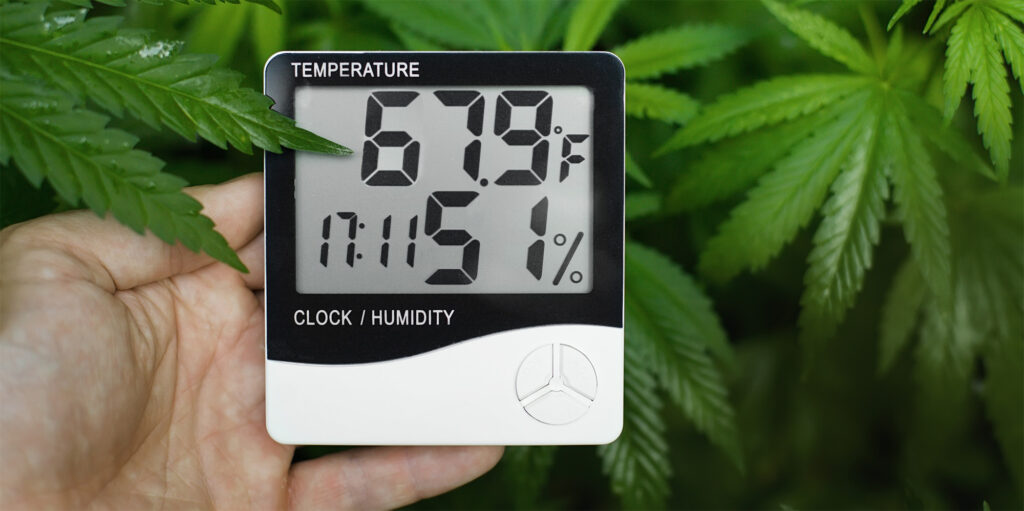
Furthermore, a water activity reading only offers a limited picture of cannabis quality. While it assesses microbial risks, it doesn’t measure total water content, which can affect weight and texture during processing. As such, cultivators should consider other metrics and measurements too.
What is Moisture Content?
Moisture content measures the total water in cannabis, including bound and free water, as a percentage of the sample’s weight. This metric influences drying times, product weight, and trim texture. Rather than looking just at the available water in a flower not needed for function and cellular development, moisture content takes a more holistic approach.
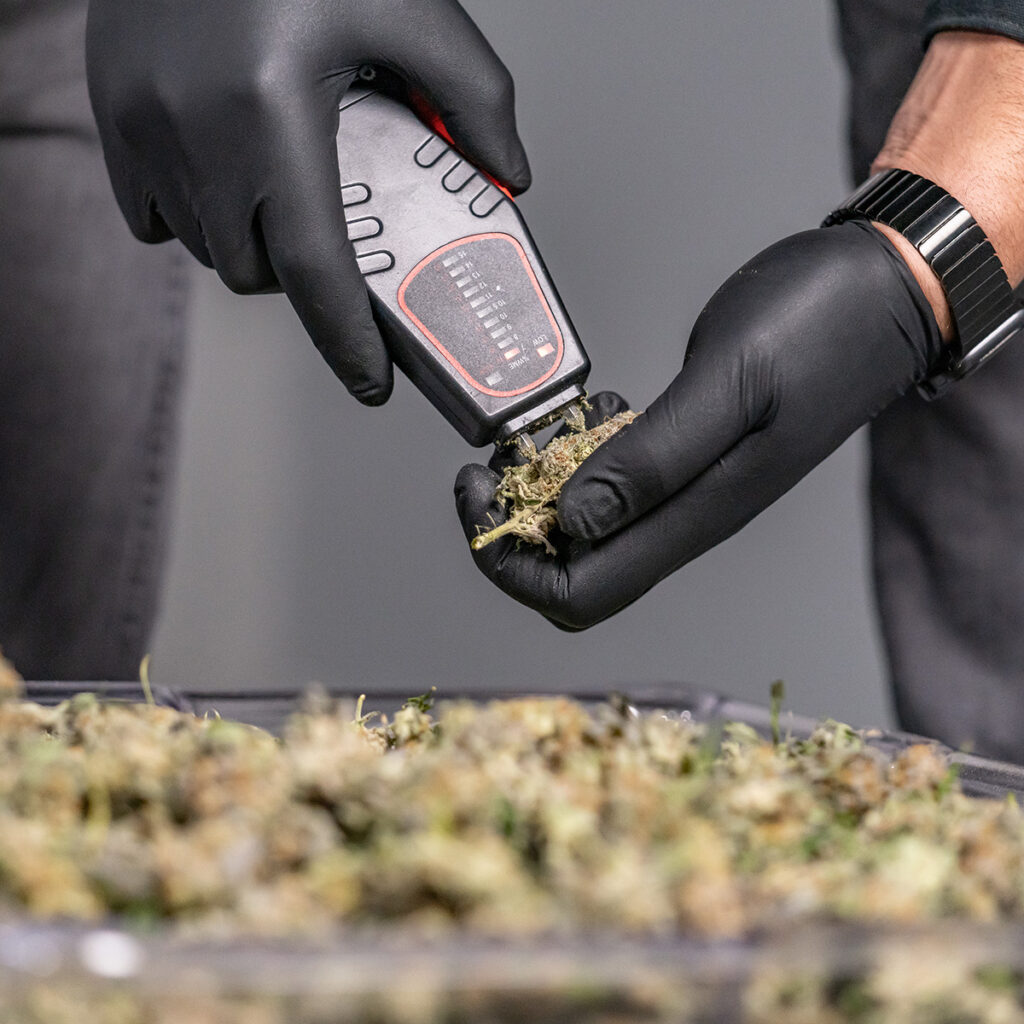
It examines how all forms of moisture in a plant, regardless of its level of availability, influence the structure of the organism. Low moisture content can lead to issues with terpene availability and brittleness in buds. However, high moisture content can lead to issues like mold and bacteria growth.
To ensure the best profit from each harvest and maximize quality yield, cultivators need to ensure that each batch has the ideal overall level of moisture content. Aiming for 10-12% moisture content ensures pliable, non-brittle buds that retain proper weight for sale. A comparison highlights its economic significance: 1 lb. of flower at a higher moisture content weighs less than 1lb. when the moisture content is reduced, representing a significant financial loss because flower is priced by weight.
To measure optimal moisture content within a flower, companies rely on innovative tools such as moisture meters or moisture analyzers, which use heat to evaporate moisture, and then measure water vapor pressure and quantity. This provides cultivators with actionable data they can use when processing and preparing their cannabis.
Pros and Cons of Measuring Moisture Content
Moisture content is a key metric to monitor throughout all stages of processing, trimming, packaging, and storage. Maintaining proper moisture content ensures that buds are neither too dry nor too wet for effective trimming. It also helps cultivators select the right trimming method for their specific needs.
The Benefits of Measuring Moisture Content
Measuring moisture content accurately leads to benefits such as:
- Increased profitability: Cannabis is sold by weight, making moisture content critical for maximizing profits. For example, flower with 12% moisture content weighs significantly more than flower dried to 9%, translating to higher revenue for the same biomass.
- Enhanced trimming processes: Proper moisture content allows for pliable, non-brittle buds that process efficiently during trimming. Depending on the cultivator’s preference for wet or dry trimming, this will influence the moisture content levels at the time of processing.
- Standardized metrics for drying: Moisture content is straightforward to measure and provides actionable data for the drying and curing stages, helping processors avoid overdrying or underdrying. This can help to reduce issues with product consistency and maintain optimal moisture from trimming through packaging and storage.
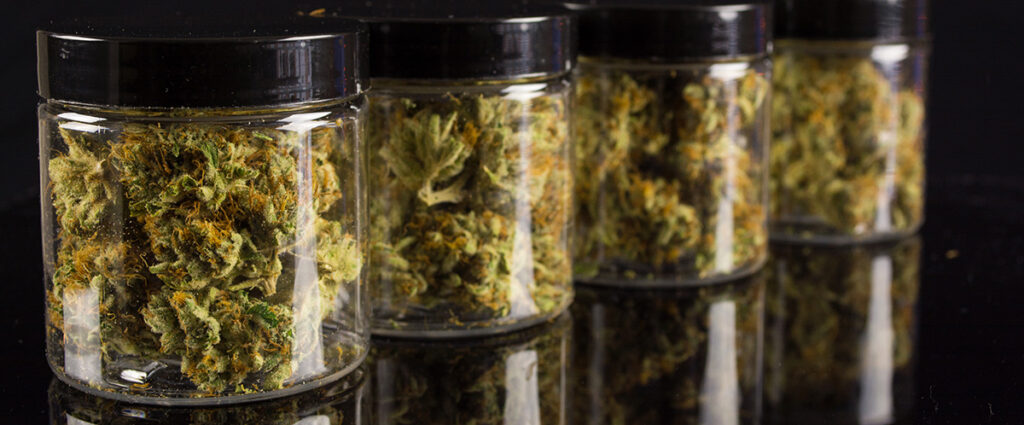
Considerations with Measuring Moisture Content
Unfortunately, just as relying on the measurement of water activity alone can be problematic, focusing exclusively on moisture content as a sole metric can be an issue for cultivators. Measuring moisture content doesn’t allow cultivators to differentiate between free and bound water when examining its impact within a plant.
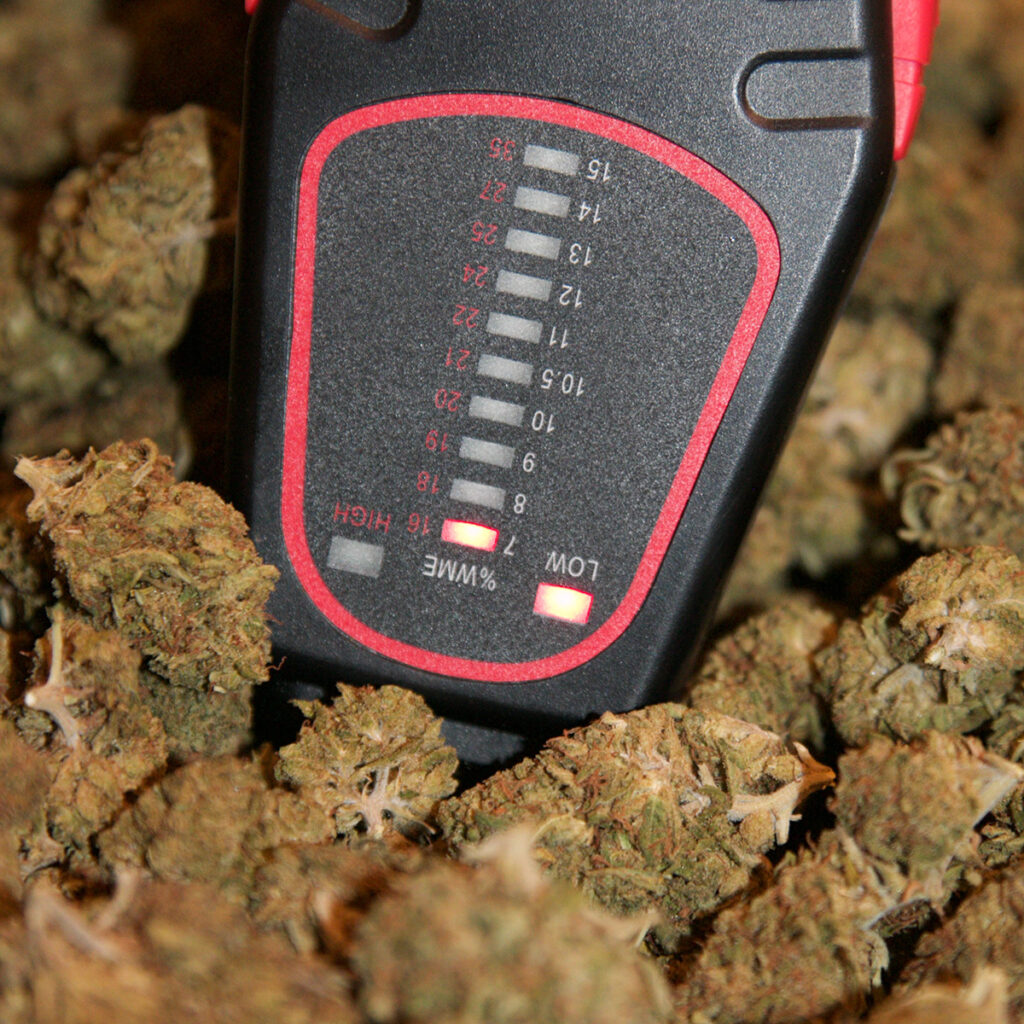
This means that high microbial risks could go undetected even if total moisture levels seem acceptable. Additionally, moisture content can vary depending on factors like relative humidity, and strain qualities. Because water binds to different plant structures in different ways, measuring moisture content alone could lead to inaccuracies if strain-specific differences aren’t considered.
Studies show that different cannabis seeds may have different moisture content metrics which influence how they should be grown and stored, which also translates to the flower after it’s been harvested and processed. Additionally, measuring moisture content alone may prompt some cultivators to focus on weight over safety.
While optimizing for weight is essential for profitability, moisture content alone does not guarantee product safety. Microbial contamination risks are better managed through water activity analysis.
Water Activity vs. Moisture Content in Cannabis Processing
Water activity and moisture content are connected by the moisture sorption isotherm. Both are relevant metrics to consider to maintain the quality, longevity, and potency of cannabis products throughout the trimming, processing, and storage processes.
When used together throughout the trimming process, and in quality control measures, both measurements help to ensure:
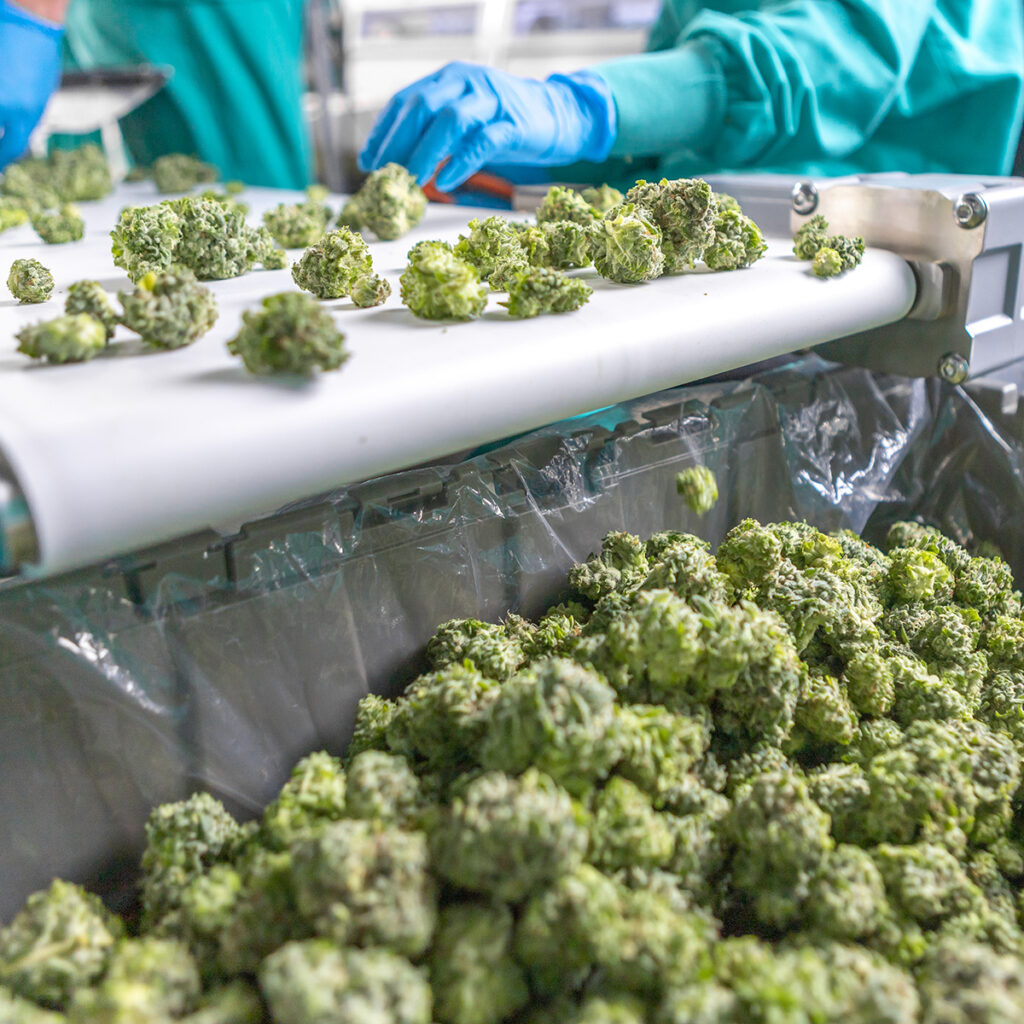
Microbial Safety and Compliance: While water activity ensures microbial thresholds are met, moisture content guides the drying and curing processes to preserve product quality. For instance, flower with ideal aw but improper moisture content may be safe but brittle, affecting trim quality.
Synergistic Quality Control: Using both metrics helps cultivators optimize texture and safety simultaneously. Cannabis with 0.55-0.65 aw and 10-12% moisture content represents the ideal balance for preserving terpenes, cannabinoids, and physical integrity.
Economic and Quality Impact: Neglecting one metric risks significant losses. Overdrying cannabis to reduce microbial risk can shrink yields by up to 10% while underdrying risks spoilage and regulatory issues.
Notably, cultivators should also be looking beyond measuring moisture content and water activity. Other factors, such as relative humidity, also play a role in the protection and quality of products. Relative humidity (RH) ties these metrics together during drying and curing. Maintaining RH at 55-65% ensures the flower reaches equilibrium, where water activity and moisture content are optimized.
Maintaining High-Quality Cannabis
Mastering water activity and moisture content is essential for high-quality cannabis processing. These metrics safeguard against microbial contamination, preserve terpenes and cannabinoids, and ensure companies can optimize trimming processes and product weight for maximum profitability.
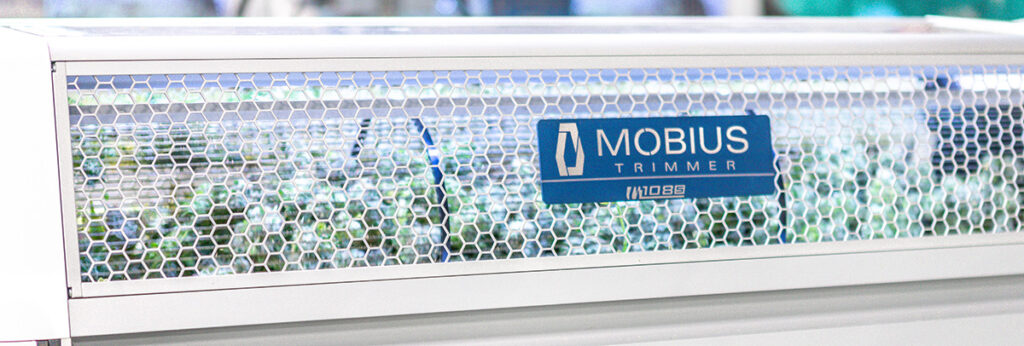
At Mobius, our equipment is designed to support precision at every stage of post-harvest processing. By incorporating our innovative tools into your workflow, alongside an understanding of moisture metrics, you can ensure you’re creating premium-quality cannabis that exceeds industry standards and adheres to compliance guidelines.
Ready to elevate your cannabis production? Contact us today to discover how Mobius equipment can enhance your operations.
